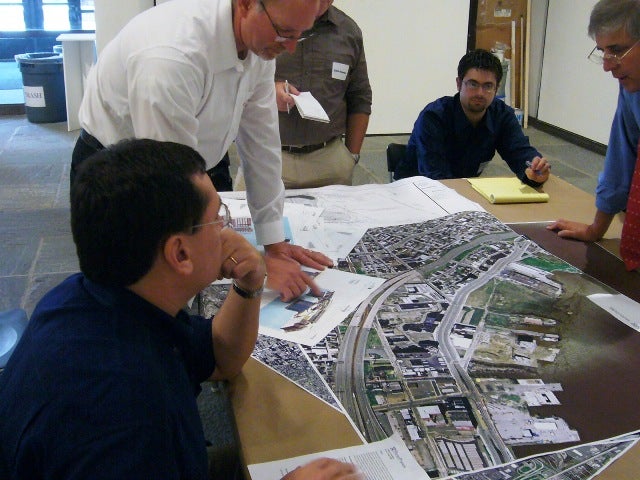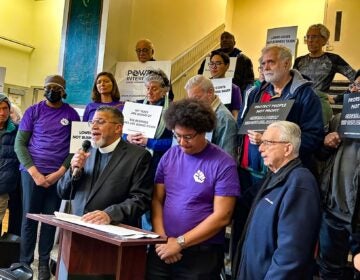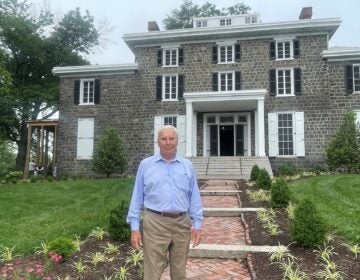Casino analysis underway

July 30
By Thomas J. Walsh
For PlanPhilly
The second day of a “casino workshop” featuring senior city officials, traffic consultants, planning experts and architects began early Wednesday morning under the direction of PennPraxis, the clinical arm of the UPenn School of Design.
The discussions were part of what Praxis calls an “independent, third-party analysis of the current casino site plans” relative to its recent 10-year action plan for the Central Delaware Riverfront, which was endorsed by Mayor Michael Nutter.
Per Nutter’s request, Praxis plans to issue results from the casino report within 30 days. Present for the discussion were deputy mayors Rina Cutler (transportation and infrastructure) and Mark Alan Hughes (sustainability), Nutter’s economic development czar Terry Gillen, Center City District President Paul Levy and about 20 other professionals, some of them local specialists and some from other cities around the country.
Noticeably absent were representatives of the planned Foxwoods and SugarHouse casinos. “You are not an ‘independent’ voice in the casino debate,” wrote Robert Sheldon, president of SugarHouse, in response to an invitation to the workshop by Praxis Executive Director Harris Steinberg. “Even before being tasked by the Mayor to conduct an analysis, you concluded that casinos do not fit into your vision of the waterfront.”
Likewise, James Dougherty, president of Foxwoods, wrote to Steinberg that he had spoken out several times against the casinos within the Praxis vision, but that in any case, the point was moot, since the first phase (of three) of the casino development has been greenlighted by the Pennsylvania Gaming Control Board, the Philadelphia City Planning Commission (during the Street administration) and the state Supreme Court.
While Steinberg, in his opening remarks Wednesday, said that the casinos as currently designed do not meet planning and transportation needs for the long-term, he stressed that the workshop was not about re-location of the casinos, or about gambling.
“It’s not about use,” Steinberg said. “It’s about form” and how we as a city talk about investment in infrastructure and sustainability. “We’re not going to be taking sides whether these are good or bad developments.”
The morning sessions were broken down into four breakout groups to discuss transportation, urban design, ecology and sustainability.
Participants were issued a “civic vision matrix,” meant to facilitate discussion of specifics, with 10 goals broken down into detailed questions about the design and infrastructure of both casinos. If the questions were deemed in the negative, the chart further answers if the problem “can be fixed” or “can’t be fixed.”
“You’ll note that there’s a lot of ‘can be fixed’ in this,” Steinberg said.
Among the transportation subgroup, the discussion moved into not only the capacity and width of Columbus Boulevard (the location of Foxwoods), parking, parking garages and the possibilities of enhanced public transit, but also the future relationship between the casino and the big box retailers to the south, such as Ikea and Home Depot.
“We have the only waterfront Wal-Mart in America,” noted Cutler. “The whole thing was developed in a truly suburban fashion. For me, part of what needs to happen is that a.) we don’t make those same mistakes over and over again and b.) to see if there’s a way to mitigate it.”
Cutler and others in the group generally agreed that Foxwoods’ plans for re-working Columbus Boulevard would work in the near-term, but there was much concern expressed about ultimate goals for the area.
“They are prepared to make big investments, but they might not be the investments we want to see, long-term,” said Jeremy Alvarez, a traffic engineer with Center City-based Stantec Consulting, which has worked with the city on a variety of traffic and transportation issues. “How much are we tying our hands if we allow these investments to go forward?”
Cutler also reminded the group that Columbus Boulevard is the official, federally mandated “escape route” for Interstate 95.
The concept of a new light rail system, which would alleviate many of the congestion concerns, was talked about, but such a system is “10 years away and a lot of money” at best, Cutler said.
PlanPhilly will continue to update this developing story as well as bring you video out-takes of the conference.
Contact the reporter at thomaswalsh1@gmail.com
WHYY is your source for fact-based, in-depth journalism and information. As a nonprofit organization, we rely on financial support from readers like you. Please give today.






